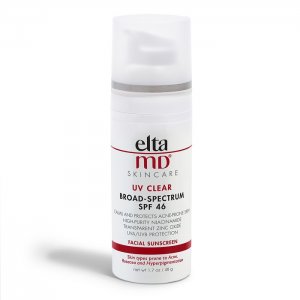The winter months can be tough on skin. While most people think the sun exposure in the summertime makes it the hardest season for skin care, winter can be just as difficult for our skin cells. In cold, dry winter climates, the skin is prone to become itchy and flaky. Without an effective winter skin care routine in place, you may experience significant discomfort and potential damage throughout the season. Keep reading to learn more about how winter weather may impact your skin and how you can adjust your skin care routine to combat the potentially adverse effects of the cold, dry winter months.
Winter Skin Care: How the Cold Impacts Your Skin
Before we share some of our tips for maintaining healthy skin during the winter months, let’s look at how the changes in temperature and humidity can negatively impact your skin’s health. The main cause for concern during winter months is dryness. Cold weather usually means decreased humidity. Additionally, windy winter weather and the use of heaters will further strip the skin of moisture. Dry skin can feel scaly and look ashy. The dry skin is likely to feel chapped or tight, and it may even crack open and bleed. Those who suffer from chronic skin conditions like eczema are much more likely to deal with flare-ups during winter months. The main goal of skin care during winter months is to avoid stripping moisture from the skin and take steps to alleviate dryness. Keep reading to learn more about how to keep skin soft and moisturized throughout the winter months.
Turn Down the Heat
The first step is adjusting your bathing routine. We recommend turning down the heat in the shower or bath, as hot water can worsen dry skin. You should also limit your bath and shower time as prolonged exposure will further dry out your skin. Instead, take short showers or baths with warm rather than very hot water. You may also want to apply a moisturizer immediately following your shower or bath.
Use a Thick, Cream-Based Moisturizer

Shop moisturizers on dermskincare.com »
Use a Humidifier
Constantly running heaters during the cold, winter months can strip moisture from the skin. Consider installing a furnace humidifier or putting a humidifier in your bedroom. These humidifiers can replace some of the moisture that the heater is stripping from your home.
Stay Covered Up
Exposure to wind, snow, and ice can also negatively impact your skin during the winter months. Be sure to protect your skin by wearing appropriate clothing and accessories, including gloves, hats, scarves, and coats. If you’re going to be outdoors for long periods of time, make sure you have the appropriate protective gear. For winter weather sports like skiing and snowboarding, make sure you wear goggles and other barrier clothing to protect your skin from chapping and windburn. If your clothing ever becomes saturated with water from melting snow or ice, you should do your utmost to find warm, dry clothing as soon as possible. This is especially important for clothing covering your extremities (head, hands, and feet).
Drink Plenty of Water
Dehydration is not a summer-only concern. Drink plenty of water. While drinking water won’t immediately add moisture to the skin, regularly consuming plenty of water will help to keep skin cells hydrated. We recommend drinking at least 64 fluid ounces of water each day or about 8 glasses.
Don’t Forget Your Sunscreen

Shop sunscreens on dermskincare.com »
Protect Your Lips

Shop lip protection on dermskincare.com »
Visit a U.S. Dermatology Partners Location Near You
The team at U.S. Dermatology Partners would love to help you prepare for healthy skin this winter. We have dermatology practices across the U.S., so no matter where you live, there’s an office near you. If you’re ready to schedule an appointment in one of our local dermatology practices, it’s quick and easy to begin. Simply fill out our online form by answering a few quick questions. One of our team members will contact you to personally schedule an appointment for you to visit one of our dermatology practices.
Find a location near me
or

